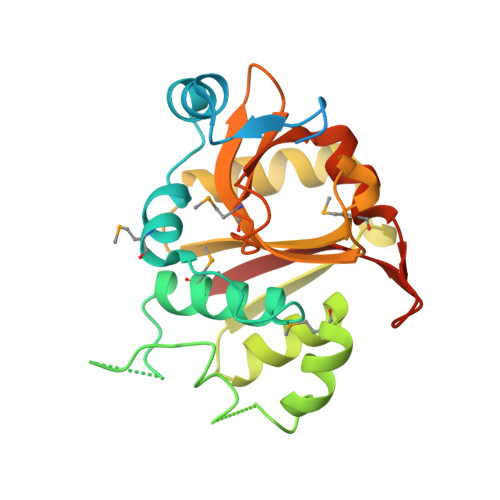A Papain-Like Enzyme at Work: Native and Acyl- Enzyme Intermediate Structures in Phytochelatin Synthesis.
Vivares, D., Arnoux, P., Pignol, D.(2005) Proc Natl Acad Sci U S A 102: 18848
- PubMed: 16339904
- DOI: https://doi.org/10.1073/pnas.0505833102
- Primary Citation of Related Structures:
2BTW, 2BU3 - PubMed Abstract:
Phytochelatin synthase (PCS) is a key enzyme for heavy-metal detoxification in plants. PCS catalyzes the production of glutathione (GSH)-derived peptides (called phytochelatins or PCs) that bind heavy-metal ions before vacuolar sequestration. The enzyme can also hydrolyze GSH and GS-conjugated xenobiotics. In the cyanobacterium Nostoc, the enzyme (NsPCS) contains only the catalytic domain of the eukaryotic synthase and can act as a GSH hydrolase and weakly as a peptide ligase. The crystal structure of NsPCS in its native form solved at a 2.0-A resolution shows that NsPCS is a dimer that belongs to the papain superfamily of cysteine proteases, with a conserved catalytic machinery. Moreover, the structure of the protein solved as a complex with GSH at a 1.4-A resolution reveals a gamma-glutamyl cysteine acyl-enzyme intermediate stabilized in a cavity of the protein adjacent to a second putative GSH binding site. GSH hydrolase and PCS activities of the enzyme are discussed in the light of both structures.
Organizational Affiliation:
Département d'Ecophysiologie Végétale et de Microbiologie, Direction des Sciences du Vivant, Laboratoire de Bioénergétique Cellulaire, Commissariat á l'Energie Atomique/Cadarache, 13108 St Paul lez Durance Cedex, France.


















